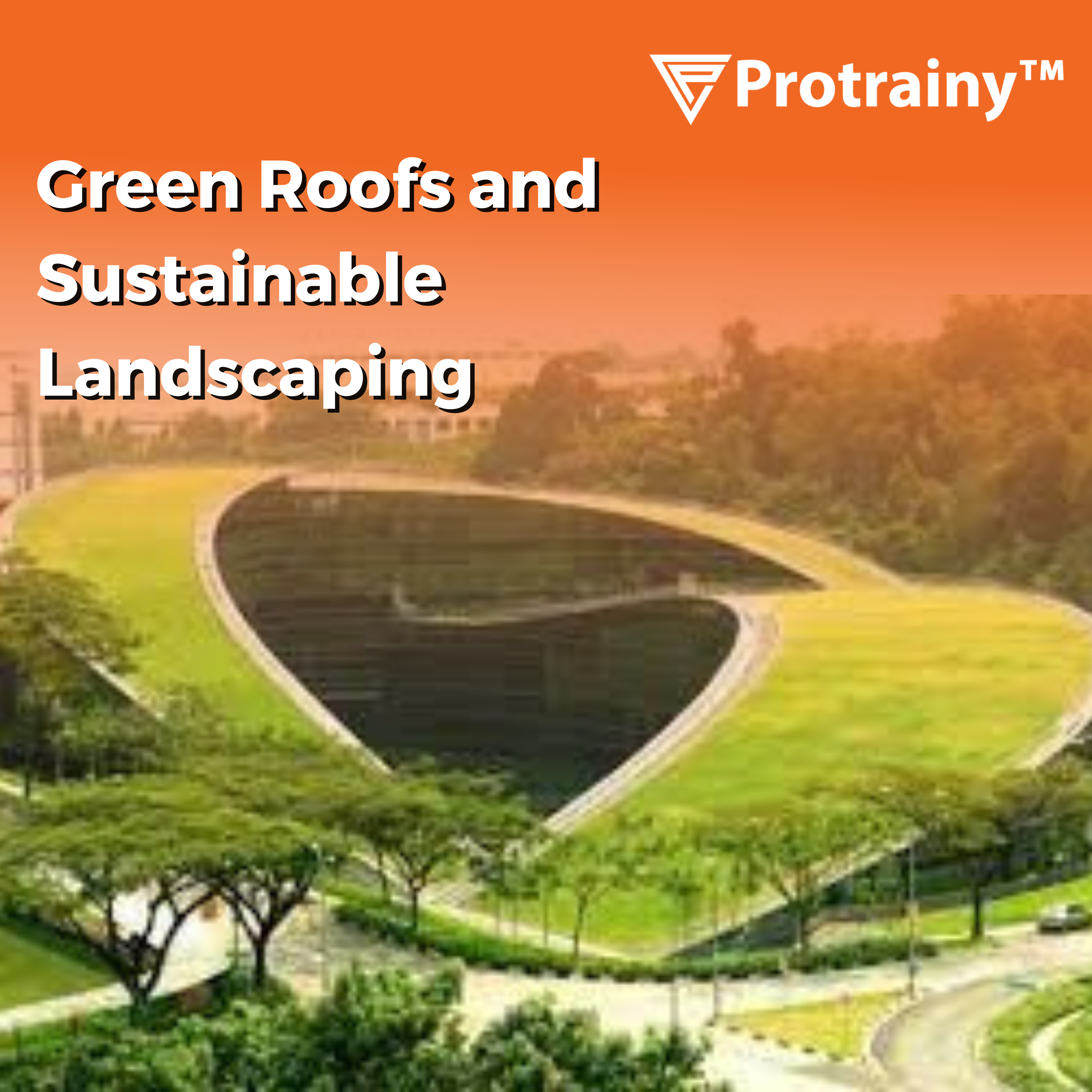Blogs
- Home
- Blogs
Green Roofs and Sustainable Landscaping: Integrating Nature into Urban Spaces
Protrainy | Aug. 23, 2023, 12:18 p.m.

As urbanization continues to reshape our cities, the need for sustainable and ecologically conscious design becomes increasingly evident. Enter green roofs and sustainable landscaping—the dynamic duo that merges nature with urban spaces. These innovative practices not only enhance the aesthetics of buildings and public areas but also bring a host of environmental, social, and economic benefits. In this blog, we'll explore the concept of green roofs and sustainable landscaping, examining their importance, benefits, design principles, and their role in transforming our concrete jungles into vibrant, livable ecosystems.
The Essence of Green Roofs: A Natural Canopy Above
Green roofs, also known as living roofs or vegetated roofs, are a creative approach to sustainable architecture that involves covering building rooftops with vegetation. This transformation turns what was once a barren surface into a thriving green landscape. Green roofs come in various types, from intensive green roofs that mimic traditional gardens to extensive green roofs with low-maintenance vegetation. Regardless of the type, the goal is clear: to integrate nature into urban spaces while offering a range of advantages.
Green roofs offer a plethora of environmental benefits that contribute to a more sustainable urban environment. They act as natural insulators, regulating indoor temperatures and reducing the need for artificial cooling and heating. By absorbing rainwater, they reduce stormwater runoff and alleviate pressure on drainage systems. Additionally, green roofs play a role in air purification, absorbing pollutants and emitting oxygen, creating a healthier and more breathable atmosphere.
Urban spaces often lack the greenery that promotes well-being and mental rejuvenation. Green roofs bridge this gap by creating accessible green areas where people can relax, unwind, and connect with nature. These spaces foster a sense of community, encourage outdoor activities, and provide refuge from the hustle and bustle of city life. In essence, green roofs are living sanctuaries that enhance the quality of life for urban dwellers. Designing a successful green roof requires a delicate balance between aesthetics, functionality, and sustainability. Considerations such as plant selection, soil composition, irrigation systems, and load-bearing capacity must align to create a harmonious living ecosystem. Plant species that thrive in the local climate are chosen to ensure low maintenance and water efficiency. The integration of walkways, seating, and even small gardens enhances the usability of the green roof, making it a true urban oasis. Beyond green roofs, sustainable landscaping extends the concept of integrating nature into the urban fabric. It involves transforming public spaces, parks, plazas, and streetscapes into ecologically rich environments. Sustainable landscaping techniques include using native plants, xeriscaping (low-water landscaping), creating rain gardens, and implementing permeable pavement. These practices reduce water consumption, promote biodiversity, and create spaces that reflect the local ecosystem.
While the environmental and social benefits of green roofs and sustainable landscaping are undeniable, there are also economic advantages. Green roofs can increase a building's energy efficiency, leading to reduced energy bills. They can also extend the lifespan of roofing materials by protecting them from the elements. Additionally, properties with green roofs often command higher resale values and attract environmentally conscious tenants. Green roofs and sustainable landscaping are not just trends; they are transformative movements that are reshaping urban landscapes. By promoting ecological resilience, reducing the urban heat island effect, and promoting sustainable water management, these practices contribute to the overall health and vitality of cities. They are a testament to the harmonious coexistence of nature and urban life.
Conclusion: A Flourishing Future Awaits
In a world where nature often takes a back seat to concrete and steel, green roofs and sustainable landscaping offer a ray of hope. They remind us that our cities can be more than just functional spaces—they can be thriving ecosystems that benefit both humans and the environment. As architects, designers, and urban planners continue to embrace these practices, we can look forward to a future where urban spaces are alive with greenery, vibrant with life, and in perfect harmony with the natural world. The time has come to cultivate a greener urban canvas, one rooftop and garden at a time.
